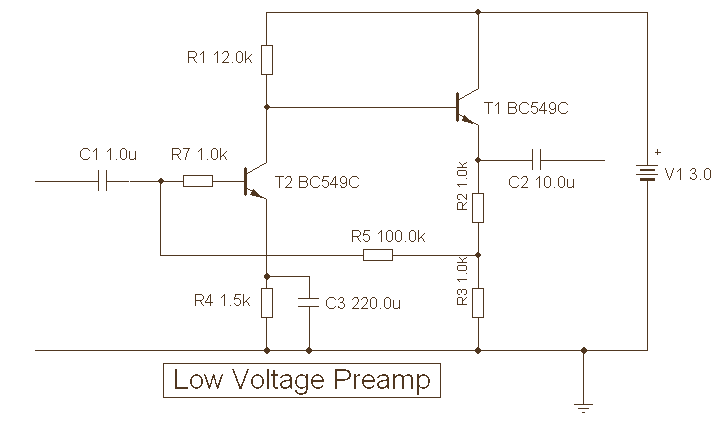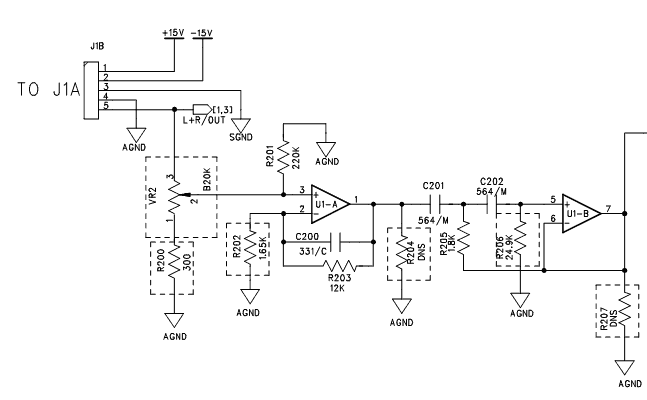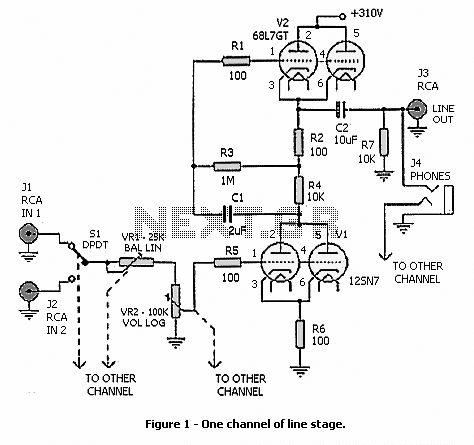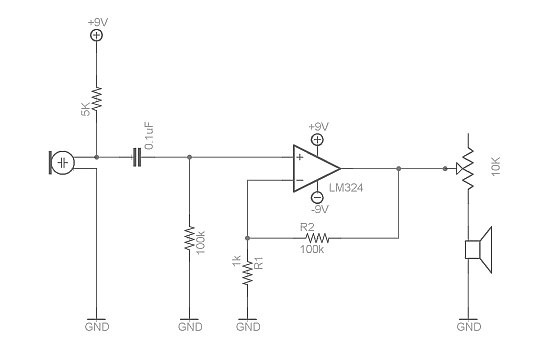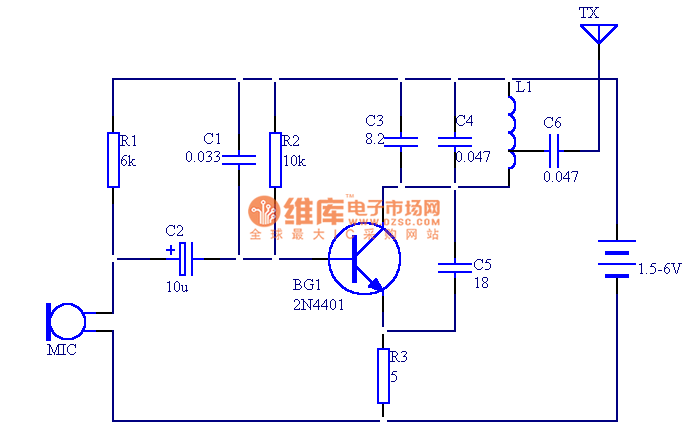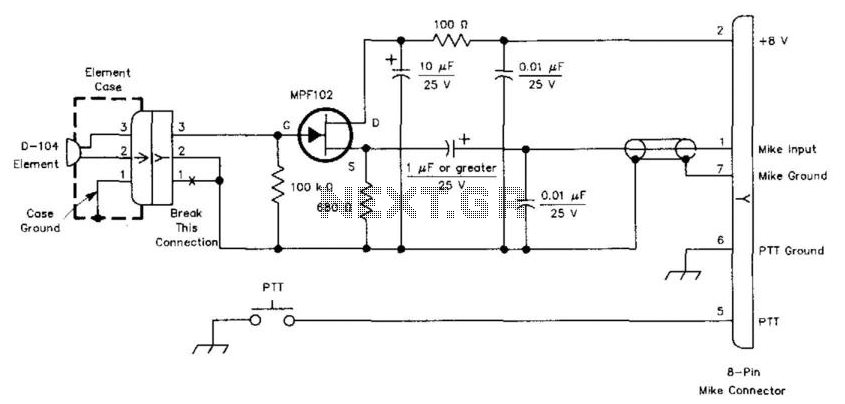
Dynamic Microphone Preamp
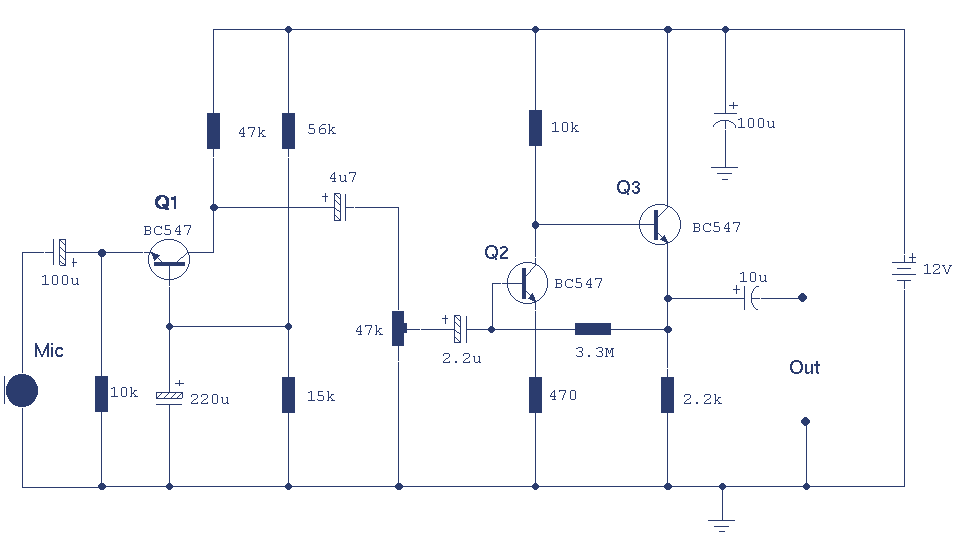
This is a 3 stage discrete amplifier with gain control. Alternative transistors such as BC109C, BC548, BC549, BC549C may be used with little change in performance. The first stage built around Q1 operates in common base configuration. This is unusable in audio stages, but in this case, it allows Q1 to operate at low noise levels and improves overall signal to noise ratio. Q2 and Q3 form a direct coupled amplifier, similar to my earlier mic preamp.
Additional Content: The amplifier, a three-stage discrete device, incorporates gain control for increased flexibility in its use. It is designed to be versatile, as indicated by the possibility of using alternative transistors like BC109C, BC548, BC549, or BC549C, without significantly altering its performance.
The first stage of the amplifier is constructed around the transistor Q1, which operates in a common base configuration. While this configuration is typically not suitable for audio stages due to its low input impedance, it is employed in this instance to keep the noise levels of Q1 low. This strategic use of the common base configuration not only reduces the noise produced by Q1 but also enhances the overall signal to noise ratio of the amplifier.
The second and third stages of the amplifier, Q2 and Q3 respectively, form a direct-coupled amplifier. This type of amplifier configuration is known for its ability to amplify a wide range of frequencies, from DC up to high frequencies. By being direct-coupled, the stages avoid the need for coupling capacitors, which can introduce distortion and limit the frequency response. This setup is akin to the design used in an earlier mic preamp, indicating a proven and effective design strategy.
In summary, the 3 stage discrete amplifier is a versatile and noise-efficient device, capable of utilizing a variety of transistors. Its design incorporates a common base configuration for the first stage to reduce noise, and a direct-coupled configuration for the remaining stages to ensure a wide frequency response.This is a 3 stage discrete amplifier with gain control. Alternative transistors such as BC109C, BC548, BC549, BC549C may be used with little change in performance. The first stage built around Q1 operates in common base configuration. This is unusuable in audio stages, but in this case, it allows Q1 to operate at low noise levels and improves overall signal to noise ratio.
Q2 and Q3 form a direct coupled amplifier, similar to my earlier mic preamp. 🔗 External reference
Additional Content: The amplifier, a three-stage discrete device, incorporates gain control for increased flexibility in its use. It is designed to be versatile, as indicated by the possibility of using alternative transistors like BC109C, BC548, BC549, or BC549C, without significantly altering its performance.
The first stage of the amplifier is constructed around the transistor Q1, which operates in a common base configuration. While this configuration is typically not suitable for audio stages due to its low input impedance, it is employed in this instance to keep the noise levels of Q1 low. This strategic use of the common base configuration not only reduces the noise produced by Q1 but also enhances the overall signal to noise ratio of the amplifier.
The second and third stages of the amplifier, Q2 and Q3 respectively, form a direct-coupled amplifier. This type of amplifier configuration is known for its ability to amplify a wide range of frequencies, from DC up to high frequencies. By being direct-coupled, the stages avoid the need for coupling capacitors, which can introduce distortion and limit the frequency response. This setup is akin to the design used in an earlier mic preamp, indicating a proven and effective design strategy.
In summary, the 3 stage discrete amplifier is a versatile and noise-efficient device, capable of utilizing a variety of transistors. Its design incorporates a common base configuration for the first stage to reduce noise, and a direct-coupled configuration for the remaining stages to ensure a wide frequency response.This is a 3 stage discrete amplifier with gain control. Alternative transistors such as BC109C, BC548, BC549, BC549C may be used with little change in performance. The first stage built around Q1 operates in common base configuration. This is unusuable in audio stages, but in this case, it allows Q1 to operate at low noise levels and improves overall signal to noise ratio.
Q2 and Q3 form a direct coupled amplifier, similar to my earlier mic preamp. 🔗 External reference
